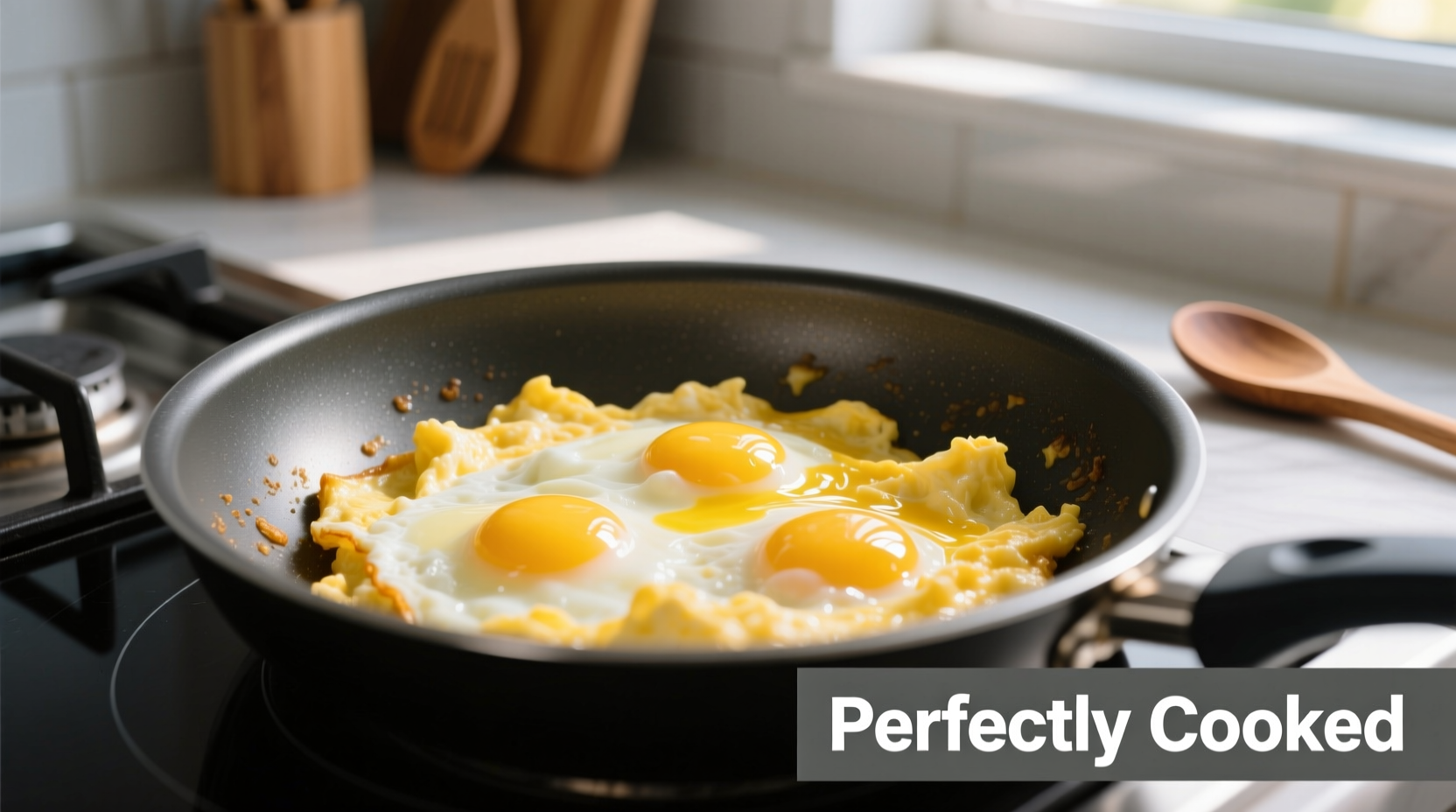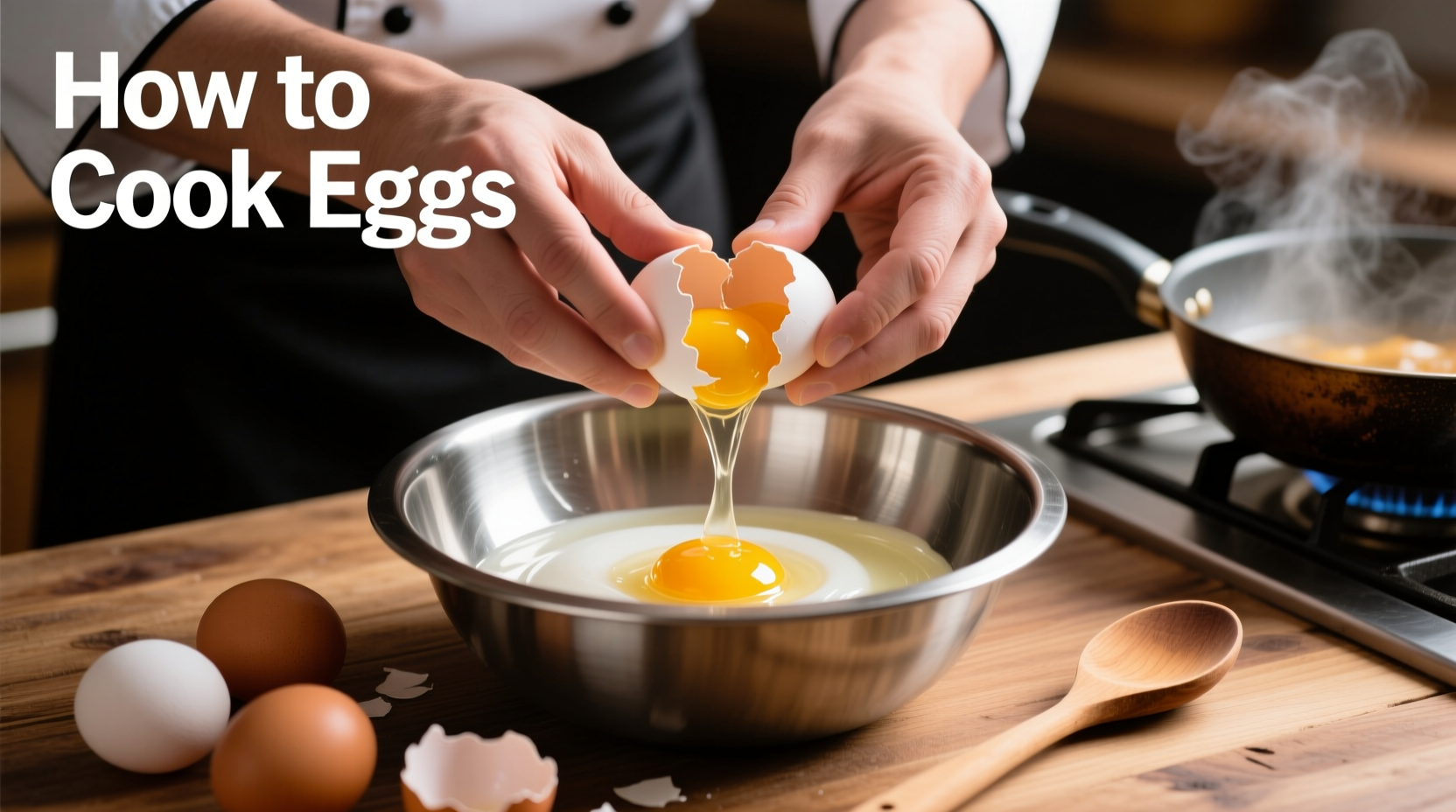The quickest way to cook perfect eggs is by boiling them for 6-7 minutes for soft-boiled or 10-12 minutes for hard-boiled. For scrambled eggs, cook over medium-low heat for 2-3 minutes while gently stirring. Fried eggs take 2-4 minutes depending on your preferred yolk consistency. Each method requires specific timing and temperature control for best results.
Mastering egg cooking transforms simple ingredients into restaurant-quality meals. Whether you're a beginner or looking to refine your technique, understanding the science behind egg preparation ensures consistent results every time. This guide covers five essential methods with precise timing, temperature control, and professional chef tips that guarantee perfect eggs regardless of your skill level.
Essential Egg Knowledge Before You Start
Eggs respond dramatically to heat, making timing and temperature critical. According to the USDA Food Safety and Inspection Service, eggs should reach an internal temperature of 160°F (71°C) to be safely cooked, though many preparations like soft-boiled eggs intentionally keep yolks below this temperature for texture.
Test freshness by placing eggs in water: fresh eggs sink and lay flat, while older eggs stand upright or float. Always use room-temperature eggs for more even cooking, especially for scrambling and omelets.
Perfect Boiled Eggs: Timing is Everything
Boiling seems simple but requires precision. The American Egg Board's research shows water temperature and timing directly impact texture:
| Yolk Consistency | White Consistency | Boiling Time | Cooling Method |
|---|---|---|---|
| Completely liquid | Set but tender | 4-5 minutes | Immediately in ice water |
| Runny center | Firm | 6-7 minutes | 2 minutes in cold water |
| Firm but moist | Completely firm | 9-10 minutes | 5 minutes in cold water |
Start with cold water, bring to gentle boil, then reduce to simmer. Adding 1 teaspoon vinegar prevents whites from spreading if shells crack. For easy peeling, use eggs that are 7-10 days old rather than very fresh ones.
Fluffy Scrambled Eggs: The Restaurant Secret
Professional chefs achieve creamy scrambled eggs through controlled heat and constant attention. The key is cooking slowly over medium-low heat while gently stirring with a silicone spatula.
For two large eggs:
- Add 1 tablespoon milk or cream (optional)
- Cook for 90 seconds, stirring every 15 seconds
- Remove from heat when slightly underdone (they'll continue cooking)
- Season with salt after cooking to prevent rubberiness
Antonio Rodriguez explains: "The protein structure in eggs changes dramatically between 140-158°F. Cooking slowly through this range creates tender curds instead of tough, rubbery eggs."

Fried Eggs: Mastering Different Styles
Fried eggs offer multiple preparation styles based on yolk consistency:
- Sunny-side up: Cook 2-3 minutes until whites set but yolk remains liquid
- Over-easy: Flip gently and cook 30 seconds for runny yolk
- Over-medium: Flip and cook 60 seconds for slightly runny yolk
- Over-hard: Flip and cook 90 seconds for fully set yolk
Use butter for richer flavor or oil for higher smoke point. Heat your pan to medium before adding fat, then reduce to medium-low when adding eggs. A lid can help set the top whites without flipping.
Simple Omelets: Technique Over Tools
Contrary to popular belief, you don't need special equipment for perfect omelets. The French technique focuses on controlled movement:
- Whisk 2-3 eggs with salt until just combined (no milk needed)
- Heat 1 teaspoon butter in 8-inch nonstick pan over medium heat
- Pour eggs in, let set slightly at edges
- Gently push cooked edges toward center while tilting pan
- After 60-90 seconds, fold and slide onto plate
For fillings, add them during the last 30 seconds of cooking. Cheese melts perfectly when added before folding.
Poached Eggs Without the Swirl
Forget the complicated water vortex method. Modern culinary science shows vinegar and controlled temperature yield more consistent results:
- Fill saucepan with 3 inches water, add 2 tablespoons vinegar
- Heat to 180-190°F (simmering but not boiling)
- Crack egg into small bowl first
- Gently slide egg into water
- Cook 3-4 minutes until whites set
The vinegar helps coagulate proteins faster, creating neater shapes. Strain excess watery egg white before cooking for even better results.
When to Use Each Cooking Method
Understanding context boundaries ensures you choose the right technique:
- Boiled eggs: Meal prep, salads, deviled eggs (best when made ahead)
- Scrambled eggs: Quick breakfasts, brunch dishes, when you need soft texture
- Fried eggs: Topping burgers, sandwiches, or rice bowls (adds visual appeal)
- Omelets: When incorporating multiple fillings efficiently
- Poached eggs: Eggs Benedict, salads, or when you want runny yolk without shell
Consider your time constraints, equipment available, and desired presentation when selecting your method. Weekday mornings might call for quick scrambled eggs, while weekends allow for more technique-intensive poached eggs.
Troubleshooting Common Egg Problems
Even experienced cooks face these issues. Here's how to fix them:
- Rubbery scrambled eggs: Cooking too hot or too long - reduce heat and remove from pan when slightly underdone
- Cooked whites with runny yolks: For fried eggs, cover pan for 30 seconds to set top whites without flipping
- Cracked boiled eggs: Add vinegar to water and start with cold water to prevent thermal shock
- Sticking eggs: Ensure proper pan temperature and adequate fat before adding eggs
Storage and Safety Guidelines
Follow these evidence-based recommendations from food safety experts:
- Refrigerate cooked eggs within 2 hours
- Store in airtight container for up to 4 days
- Reheat to 165°F (74°C) internal temperature
- Discard if left at room temperature over 2 hours
- Never reuse water from boiling eggs for other cooking
Raw eggs in recipes like homemade mayonnaise should use pasteurized eggs when serving vulnerable populations. The FDA recommends against consuming raw or undercooked eggs for children, elderly, pregnant women, or immunocompromised individuals.











 浙公网安备
33010002000092号
浙公网安备
33010002000092号 浙B2-20120091-4
浙B2-20120091-4